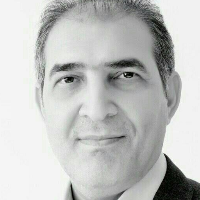مقالات رزومه دکتر عباس غفاری
-
-
-
مفهوم فناوری در معماری و تبیین مولفه های آن با استفاده از روش دلفیThe concept of technology in architecture and explaining its components using Delphi method
-
-
-
-
-
-
-
-
-
-
-
-
-
-
نمایش عناوین بیشتر...
فهرست مطالب این نویسنده: 40 عنوان
بدانید!
- این فهرست شامل مطالبی از ایشان است که در سایت مگیران نمایه شده و توسط نویسنده تایید شدهاست.
- مگیران تنها مقالات مجلات ایرانی عضو خود را نمایه میکند. بدیهی است مقالات منتشر شده نگارنده/پژوهشگر در مجلات خارجی، همایشها و مجلاتی که با مگیران همکاری ندارند در این فهرست نیامدهاست.
- اسامی نویسندگان همکار در صورت عضویت در مگیران و تایید مقالات نمایش داده می شود.





